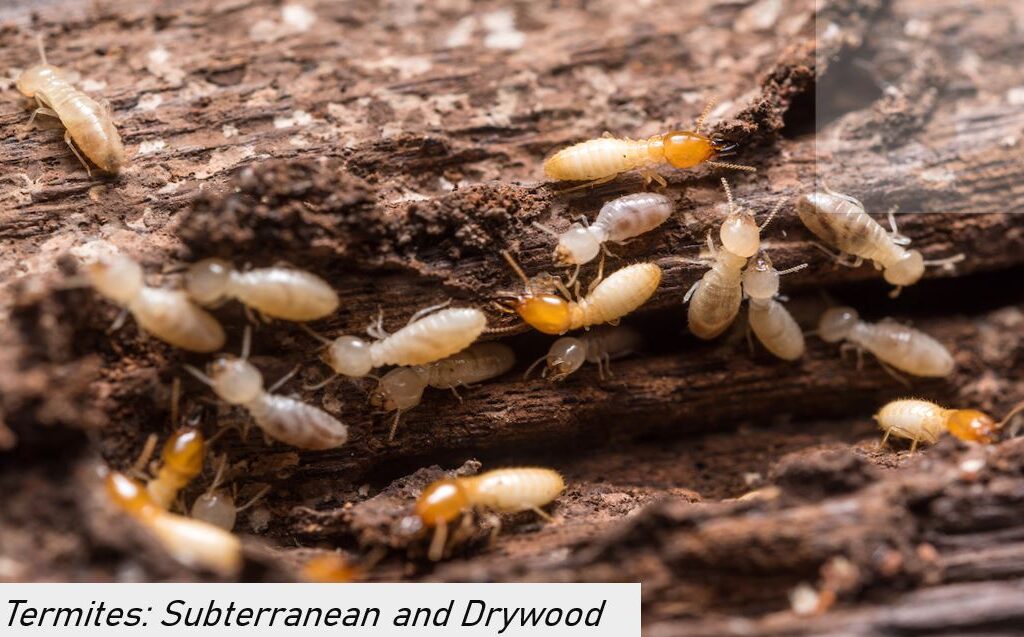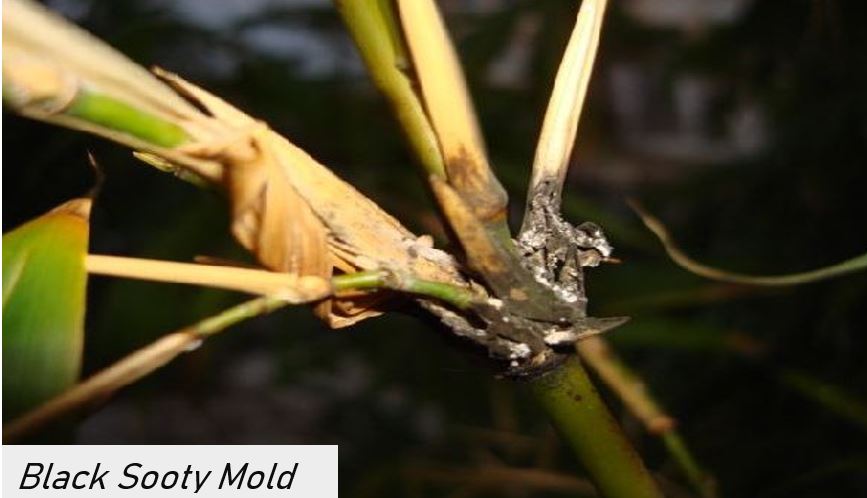A healthy bamboo grove is remarkably resistant to pests and Bamboo diseases.
Bamboo is generally less susceptible to disease than many other tropical plants. But they are not immune. You may notice some spots or discoloration that indicate a problem & known as Bamboo diseases.
Fortunately, most of these threats are non-lethal and usually do not significantly affect bamboo growth, especially if detected early. Monitor your plant regularly for changes that might indicate a problem. This article has answers to common bamboo plant problems.
Table of Contents
- Bamboo Pests & Diseases
- Natural Ways to Control Bamboo Pests & Diseases
- Chemical Treatments
- Common Conditions That Damage Healthy Plants:
- Further Readings: Check out relevant articles
- FAQs: Frequently Asked Questions
Bamboo Pests & Diseases
Some insects, such as scales, mealybugs, and mites, only target bamboo. Like aphids, they do not distinguish between others. They will attack almost any plant they see. These insects feed on plants, weakening them and making them more susceptible to other problems such as mold and rot.
Additionally, a perfectly healthy plant can fall prey to herbivores who like the taste of bamboo. Every perpetrator leaves his mark and causes his own damage. Knowing what you are dealing with is the first step to conserving bamboo.
Bamboo Mealybug – Palmicultor lumpurensis

These mealybugs are sap suckers. Like aphids and mites, they damage plants by feeding on the liquid bamboo needs to survive. Like aphids, mealybugs leave a honeydew secretion that prepares plants to rot. Bamboo leaves and stems become unhealthy, warped, and discolored.
Pest Appearance: The insect may be surrounded by a sticky white tissue that resembles fluff. When the white matter is peeled off, the mealybug appears which is small and pink.
Bamboo Mites

Bamboo mites are your biggest concern. Not only are they difficult to see with the naked eye, they are also difficult to remove.
It grows in clusters on the underside of leaves and sucks liquids such as chlorophyll from plants. When the mites pierce the underside of the leaves and wash away the bamboo fluid, photosynthesis in the leaves is impaired and the leaves become discoloured. Look for pale yellowish shades of bamboo leaves. If you don’t act quickly, mites will spread to the surrounding bamboo. The increased bamboo mite infestation is of great concern and is a major problem, especially in the hot, dry regions of North America.
Pest Appearance: Usually too small to be seen with the naked eye. They can be seen as tiny specks within a fine web on the underside of the leaf.
Termites: Subterranean and Drywood

As the name suggests, subterranean termites emerge from the ground in tube-like channels to attack the ground bamboo. When they enter the flesh of plants, they gnaw the inside of bamboo stems and culms. Some colonies have multiple egg-laying females, so underground termite nests grow rapidly to thousands.
Nests are often present and can be overlooked. Looking for early warning signs is key to avoiding the most serious damage. Look for evidence of winged hawksbill moths, mud pipes, and damaged bamboo.
Drywood termites don’t need mud tubes. It builds a nest directly on the part where the bamboo stem is gnawed. By the time the infestation becomes noticeable on the outside of the plant, bamboo is often in the late stages of decay.
Pest Appearance: Swarmer termites resemble flying ants, but are smaller and have straighter antennae. They have 4 equal wings. The worker ant is wingless, less than 6 mm long and cream in colour.
Fungal Spots

Fungal spots may appear on the buds as the bamboo ages, especially in humid environments. Indoor bamboo plants are particularly affected as fungal spots are often associated with poorly drained soil.
Fungi usually appear in a circular pattern. In most cases, this is due to aging and is not particularly harmful to bamboo.
However, some fungi can cause root rot or be a symptom of other problems. Also, some dangerous molds and pests leave residue that looks like fungus, so it’s important to be aware of what’s going on to know how to deal with it.
Pest Appearance:
The circular pattern of brownish spots on culms.
Aphids

Some species of aphids feed on bamboo and suck the living liquid from the plant. Not only do they harm your plants, they can also spread disease. Aphids reproduce quickly and can cause extensive damage if left unchecked.
Aphids are small, soft-bodied insects. These winged pests pierce bamboo with their narrow mouthparts and suck out the liquid in which the plant lives. Over time, the bamboo leaves wither and the bamboo stunt its growth. When fed on bamboo, aphids secrete a sticky honeydew. This secretion can cause secondary problems for the plant. It’s a sooty mold that begins to grow in a sweet, sticky substance.
Pest Appearance: Small, winged, soft-bodied. Their colour is predominantly green, but can also be tan, brown, red, yellow, gray or even black depending on location and time of year. They are small, but usually visible to the naked eye.
Scale

Scales are small insects with a waxy shell-like covering on their backs. They also suck on bamboo, depriving it of nutrients and causing rot in plant tissue. The scales are tufted and can be difficult to see until the clumps are so dense that they cover the culm, giving the surface a brownish-grey appearance.
The scales also secrete honeydew that attracts insects & ants and sets the stage for the growth of sooty mold on the bamboo.
Pest Appearance: Scales look like small flattened cones on twigs and leaves. Light when young, darkens with age and becomes more prominent.
Black Sooty Mold

Black sooty mold is probably the most common plague on bamboo plants, thanks to many pests such as aphids and scale insects. The insects feed on the bamboo plants and leave behind a sticky honeydew substance, perfect for mold growth. This secretion collects on the branches and sooty mold begins to grow inside.
Over time, mold develops into unsightly black spots. The plant also has an insect infestation at the same time, so the bamboo will continue to rot unless both issues are addressed. Mold may not kill plants by itself, but insects eventually do.
Pest Appearance: Black sooty spots with a gray appearance.
Decay Rot

A number of fungal diseases that affect plants in soils that are too wet or poorly drained. Almyria fungus, also called oak root fungus, is one such disease. Leaves discolour and fall off, often withering. If left untreated, the plant will eventually rot.
Problem Appearance: Root fungus is evidenced by the fungus around the base of the plant. You may also find bamboo to be crumbly or spongy.
Bamboo Mosaic Potex Virus – BaMV
In some cases, people can unknowingly transmit the disease to plants through improperly cleaned cutting and pruning tools. Infected when used to prune healthy plants. BaMV is rare, but cannot be treated, so keeping tools clean is recommended as a precaution.
The first symptom of a refractory virus is mosaic leaf discoloration. Then follows the gradual death of twigs, branches, shoots or roots starting at the tip.
Problem Appearance: Mosaic discoloration of leaves.
Wildlife
Tasty bamboo isn’t just for bugs. Many animals find the tender new bamboo shoots and rhizomes a delicious treat like Ground squirrel, Deer, & Tropical animals like Gorillas, Elephants, Giant Pandas and Chimpanzees love bamboo.
Common Indicators of Disease in Bamboo:
- Leaves are brown
- White signs on root tips
- Sticky substance on branches
- Black sooty film like ash
- Circular rings pattern on leaves
- Leaves are wilted
- Signs of gnawing, bites, and chewing
- Brownish-gray clumps
- Unusual presence of insects
- Silky webbing on bamboo leaves
Natural Ways to Control Bamboo Pests & Diseases
Water High-Pressure Washing: Sandblast the entire bamboo, paying particular attention to dense leaf areas and the underside of the leaves. This is very effective against mites and other insects and does not harm the leaves. This can be done several times a week.
Pressure Wash with Insecticide Soap: Use 1 tablespoon of washing powder to 1 gallon (3.78 L) of water with a pressure washer or handheld sprayer. The leaves turn a little yellow after treatment, but it is highly effective and has very low toxicity. Do not apply more than once every 2 weeks
Gardening Oil: Mix 2-5 tablespoons of water per gallon (3.78 L) of water. Use just enough spray solution to fully penetrate the canopy and cover the top and bottom of each leaf until wet.
Mowing: Uncontrolled mite infestation may require mowing the entire area and discarding leaves and sticks.
Natural Enemies: Ladybirds, lacewings, predatory mites (such as Neoseiulus fallacis), and parasitic wasps help prevent infestations of problematic bamboo insects and mites. Crypts, Mealy Bug Destroyer: This is a bug that loves mealy bugs and destroys active colonies.
Physical Barriers: For wildlife, the only way to protect bamboo is to keep animals out. A wire mesh around the young shoots helps the plants better establish themselves before the animals do too much damage. Once the shoots have hardened, the barrier is removed and the natural beauty of the bamboo can be enjoyed.
Chemical Treatments
These pest control methods are much more drastic and potentially toxic. They should be considered an option only if you have exhausted the natural methods above.
Before deciding to use any pesticide, review the latest health and safety information before use. When using pesticides, wear protective clothing and follow the directions on the bottle, including all safety precautions.
Neem Oil: An organic insecticide that kills mites, aphids, mealybugs, whiteflies, and other insects.
Imidacloprid Granules: Soil-based systemic insecticide granules that require annual reapplication. Perfect for use in areas where you cannot spray.
Abamectin: Kills only mites and leaf diggers, no other insects or birds. Its systemic action makes it more effective against mites.
Common Conditions That Damage Healthy Plants:
Heat: Too much heat and direct sunlight can stress and damage plants. Most bamboo varieties prefer shade or partial sun.
Water: Too little water can cause the bamboo tips to turn brown. New bamboo plants benefit from more frequent watering until the plants reach 3-6 month mark. After this, in-ground plants usually do not need additional watering unless they are very dry.
Water Potted Bamboo: Slightly dry soil is always preferable to moist soil. A mature bamboo plant will tell you when it’s thirsty. Do not water the plant until the leaves begin to curl.
Soil: Well-drained, aerated soil helps prevent root rot and other diseases. So pay close attention to soil quality.
Fertilizer: Be careful not to give too much. If the top of your bamboo is brown, that could be the culprit. Natural fertilizers may also contain salts that can burn bamboo leaves.
Winter Damage: Cool weather can burn the leaves of many bamboo species. Some of the leaves may even fall off the plant, but those leaves should grow back in the spring. Many bamboo species are hardy and can withstand cold weather.
Further Readings: Check out relevant articles
Click on the below links to read related articles on bamboo
- Types of Bamboo
- Life of Bamboo
- Bamboo Farming in US
- Bamboo Farming in India
- National Bamboo Mission in India
FAQs: Frequently Asked Questions
How do you get rid of fungus on bamboo?
Use lemon oil or a solution of vinegar and water to remove fungus. For bamboo furniture, we recommend three coats of water-based polyurethane after demolding. This may take some time, but it will definitely save your furniture.
Why is my bamboo turning yellow and dying?
Excessive yellowing of bamboo leaves may be due to over-watering, under-watering, or lack of nutrients. Plant bamboo in well-drained soil, water regularly, and use organic compost yearly to add nutrients.
Should I cut yellow leaves off bamboo?
Simply peel or cut off unwanted leaves so new ones can grow to replace them. Don’t let yellowed leaves turn brown or black. Rot can spread to other parts of the bamboo.
What does bamboo look like when dying?
If your bamboo has dead leaves and stems, you will notice that the leaves and stems are turning yellow. This indicates that the plant is unhealthy and will spread to other parts of the bamboo if left untreated.



